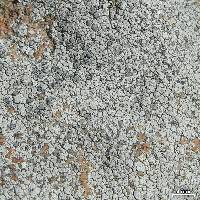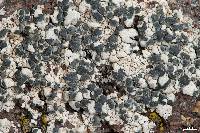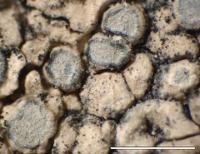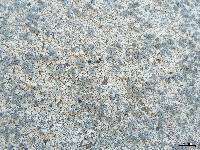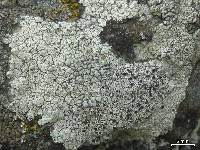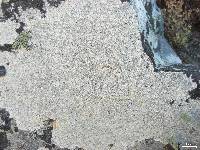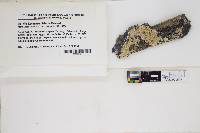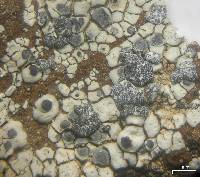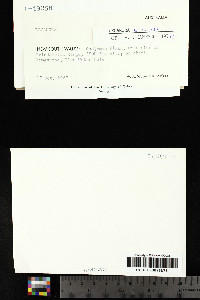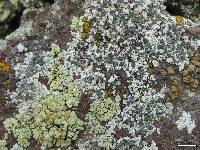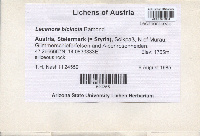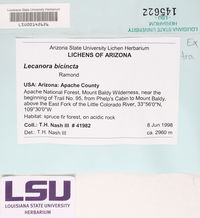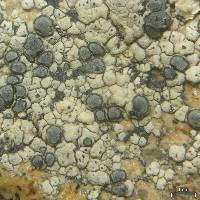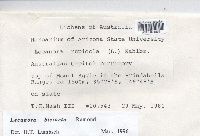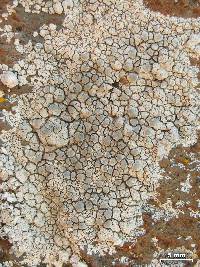
Consortium of Lichen Herbaria
- building a Global Consortium of Bryophytes and Lichens as keystones of cryptobiotic communities -
- Home
- Search
- Images
- Species Checklists
- US States: O-Z >
- US National Parks
- Central America
- South America
- US National Parks
- Southern Subpolar Region
|
|
|
|
Family: Lecanoraceae
[Lecanora rupicola var. bicincta (Ramond) Clauzade & Cl. Roux] |
Nash, T.H., Ryan, B.D., Gries, C., Bungartz, F., (eds.) 2004. Lichen Flora of the Greater Sonoran Desert Region. Vol 2. Thallus: crustose, continuous or rimose-areolate to verrucose, some specimens effigurate at margin; prothallus: not visible, or white, or blackish to bluish brown areoles: flat, thin or thick, opaque or glossy, ecorticate surface: yellowish white to yellowish gray or yellowish orange to orange-white or whitish gray to gray or white to cream colored, smooth, epruinose, with an indistinct margin or effigurate or arachnoid, esorediate Apothecia: subimmersed when young, sessile when mature or sessile or adnate, 0.5-1.5 mm in diam., lecanorine disc: dark brown to blackish brown or gray-brown, plane, heavily bluish gray pruinose margin: concolorous with thallus, thin or thick, persistent, even or prominent, not flexuose, smooth, entire, with a parathecial ring amphithecium: present, with numerous algal cells, with large and small crystals, the small ones soluble in K, ecorticate but with pseudo-cortex; pseudocortex: indistinct, basally not thickened, opaque, hyaline, (20-)25-30(-35) µm thick parathecium: hyaline, lacking crystals epihymenium: brown to dark brown, with pigment dissolving in K, with crystals dissolving in K hymenium: hyaline, clear; paraphyses: slightly thickened apically, not pigmented; subhymenium: hyaline, 15-20 µm thick; hypothecium: hyaline, without oil droplets asci: clavate, 8-spored ascospores: hyaline, simple, ellipsoid, 9.5-14 x 5.5-7.5(-8) µm; wall: less than 1 µm thick Pycnidia: not seen Spot tests: thallus and apothecial margin K-, C+ orange to orange-red or yellow, P- to P+ pale yellow, apothecial disc C+ orange Secondary metabolites: arthothelin (minor or absent), atranorin (major), chloroatranorin (minor), eugenitol (minor), roccellic acid (major), sordidone (major) and thiophanic acid (submajor or absent). Substrate and ecology: on exposed siliceous rocks and overhangs in montane to alpine habitats World distribution: bipolar to subcosmopolitan, known from Africa, Asia, Australasia, Europe, North America, and South America Sonoran distribution: Arizona, California, and Baja California. Notes: Lecanora bicincta is characterized by the bluish gray pruinose apothecial disc with a well developed bluish parathecial ring and a whitish to yellowish gray thallus. Norstictic acid has not been reported in this species from the Northern Hemisphere, but occurs frequently in specimens from South America, southern Africa and Australia. It is often mistaken for L. rupicola. However, this species is readily distinguished by the absence of a bluish black perithecial crown. |
|
|
|
Powered by Symbiota











